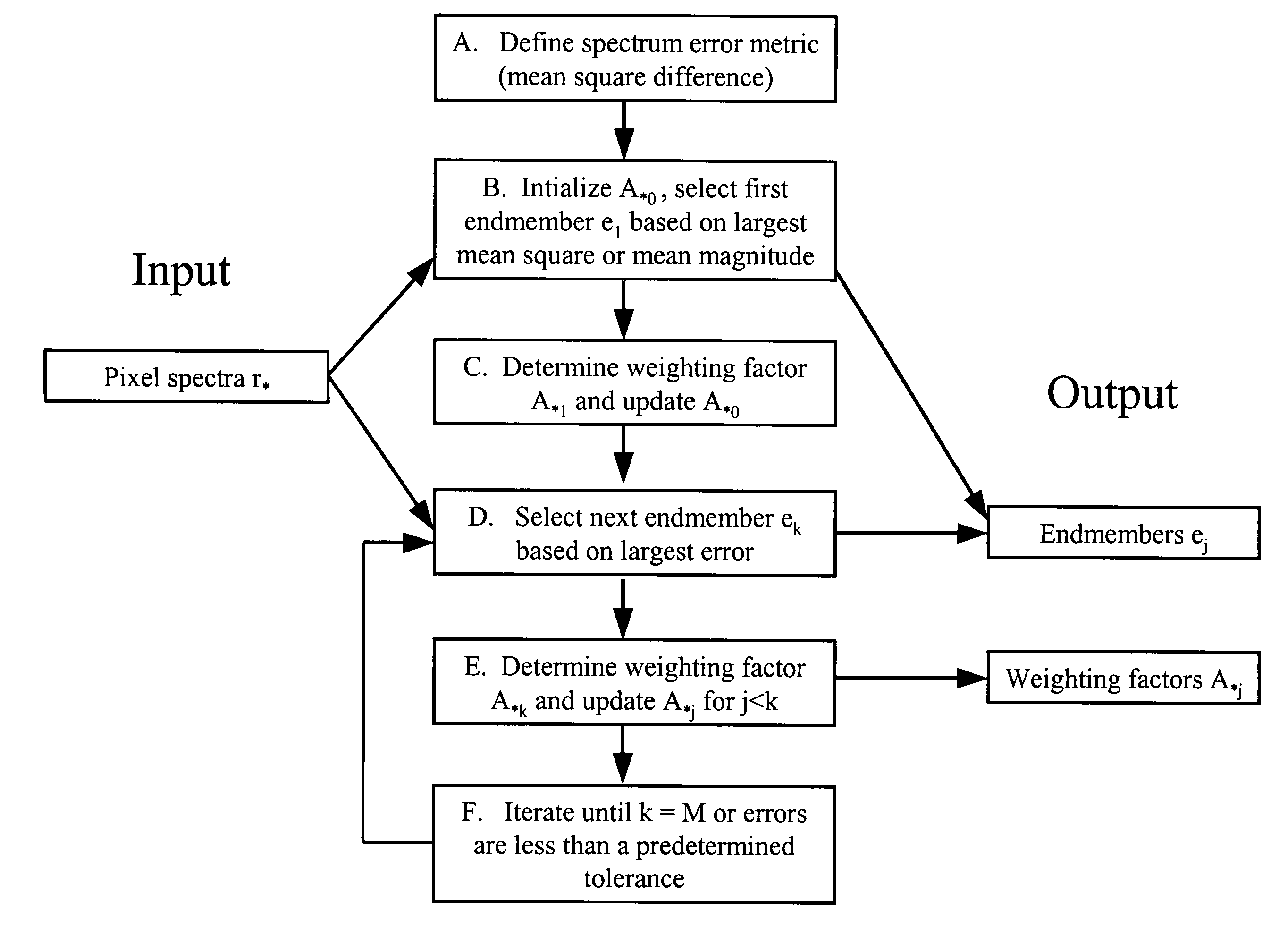Process for finding endmembers in a data set
a data set and endmember technology, applied in the field of data set endmembers quickly and automatically found by the process, can solve the problems of processors that spend additional time repeatedly, somewhat different, adversely affected by noise, etc., and achieve the effect of minimizing the additional transfer tim
- Summary
- Abstract
- Description
- Claims
- Application Information
AI Technical Summary
Benefits of technology
Problems solved by technology
Method used
Image
Examples
Embodiment Construction
Nomenclature and Definitions
[0018]For ease of explanation, let the set of data vectors (which must be of equal length) be a group of N spectra (in the preferred embodiment the spectra are pixel spectra), in which each pixel spectrum consists of intensity values for a set of spectral channels.
[0019]The set of pixel spectra is denoted {r1r2 . . . rN}. An arbitrary individual member of this set is denoted r*.
[0020]The endmembers to be determined are a subset of the pixel spectra and are denoted {e1 e2 . . . eM}, where M is the number of endmembers. In addition, e0 is defined as the spectrum consisting of all zero intensities, referred to as the zero endmember; it is used as a placeholder to implement an optional summation constraint as will be described.
[0021]Let R*=the pixel spectrum vector difference (also referred to as the residual) between r* and its representation via the expression ΣkA*k ek, where k runs from 1 to M. A*k is referred to as the weight (or weighting factor) of endm...
PUM
 Login to View More
Login to View More Abstract
Description
Claims
Application Information
 Login to View More
Login to View More - R&D
- Intellectual Property
- Life Sciences
- Materials
- Tech Scout
- Unparalleled Data Quality
- Higher Quality Content
- 60% Fewer Hallucinations
Browse by: Latest US Patents, China's latest patents, Technical Efficacy Thesaurus, Application Domain, Technology Topic, Popular Technical Reports.
© 2025 PatSnap. All rights reserved.Legal|Privacy policy|Modern Slavery Act Transparency Statement|Sitemap|About US| Contact US: help@patsnap.com


